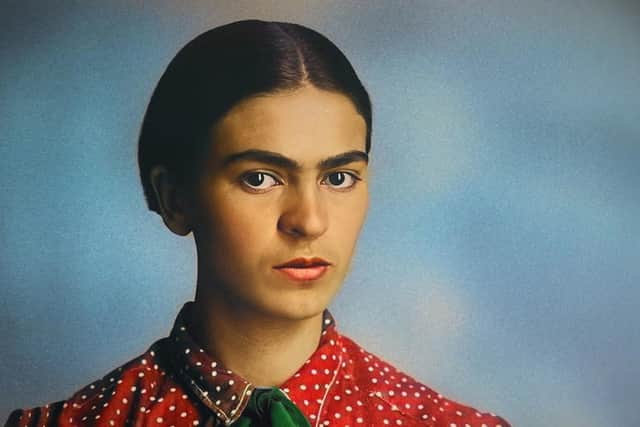TV Pick of the Week: Becoming Frida Kahlo - review by Yvette Huddleston
Because much of her work featured self-portraits, Mexican painter Frida Kahlo is one of the most recognisable of the more popular and well-known 20th century artists. Her vivid, visceral paintings have taken on an iconic quality and her face can be seen on all kinds of merchandise from mugs to fridge magnets, lampshades to cushion covers.
The fact that she and her work have been appropriated in this way should not however detract from the quality of her stunning paintings nor from the extraordinary woman she was. This excellent three-part series takes an in-depth look at her life, her work and the experiences that shaped her and fed into her creativity. As a bright, academic teenager Kahlo was planning to study medicine and become a doctor but a horrific trolley bus accident that left her with life-changing injuries put paid to those plans. Bed-ridden for months and encased in plaster to try and heal her spine, Kahlo turned to art using a special easel her mother made which allowed her to paint while lying on her back.
Advertisement
Hide AdAdvertisement
Hide AdHer health issues as a result of the accident would cause her problems throughout her life – she was in almost constant pain and also suffered several miscarriages as a result of the internal damage it had caused. Birth, death, miscarriage, heartbreak all feature in her candid artworks.


Figuring large in Kahlo’s life was the celebrated Mexican muralist Diego Rivera, more than twenty years her senior who was initially her mentor, then her lover and eventually her husband. It was a great love story, which had to overcome challenges and disapproval – their wedding was attended by one guest, Kahlo’s father; her mother declined as she was unhappy that her daughter was marrying a much older who a Communist to boot. There was clearly a strong bond between Frida and Diego, although Rivera was incapable of remaining faithful which caused Kahlo much distress.
There are contributions from Mexican art historians and Kahlo’s biographer who discuss her legacy as an artist as well as her rebellious spirit, evident both in the way she lived her life and in the subject matter she chose for her work. We also hear from closely connected family members such as Kahlo’s great-niece the photographer Cristina Kahlo and Diego Rivera’s grandson. Overall, it is a fascinating, celebratory portrait of a woman who endured a great deal, achieved so much and lived and loved very well.